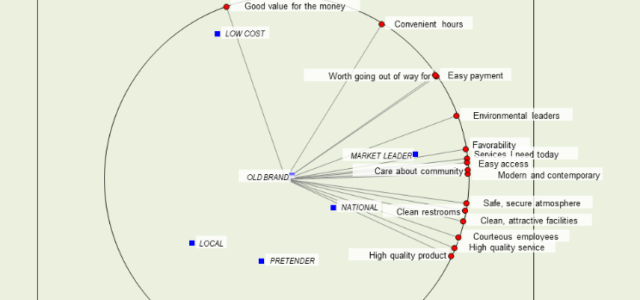One of the biggest challenges for mid-size service firms, when it comes to selling professional services, is that the same people who sell also deliver. These people are constantly torn between the need to develop new business and to satisfy current clients.
If they spend too much time prospecting for new clients, they are concerned current clients will migrate to other providers. If they don’t prospect for new clients, they won’t grow. So what do they do? How do they acquire new clients while also keeping current clients happy? It’s a real conundrum.
But the biggest challenge, when it comes to new business development, is figuring out who should sell. I’ve worked with numerous service firms who have tried to constitute sales teams that did not produce the desired results.
After working with dozens of mid-size professional service firms, I’ve arrived at a simple conclusion. If you want to grow, your top-most people must sell. This is crucial to unlocking your firm’s full potential for consistent growth. Let me share with you what I know works today.
Who this counsel is for
The counsel I’m about to put forward is not for every type of professional service firm. These ideas are unique to the mid-size service firm and here’s why. Small service firms and solo-preneurs have to both sell and deliver. They have no other option.
Large service firms usually take two approaches. They sometimes give thought leaders formal training in business development and then give them time to prospect and sell. Or they have dedicated new business development teams. People on these teams are usually very experienced and were formerly subject-matter-experts on delivery teams.
But the mid-size service firm is different. Usually these firms are already successful and have a few different types of teams. They often have a leadership or executive management team. They have delivery teams who can work independently of the senior executives to produce work-product.
The types of mid-size service firms that I’ve built this counsel for share a few characteristics:
- They’ve been in business at least 5 years.
- They have several million dollars in revenue.
- They are very good at what they do but they are not the best-known firm in their industry.
- They have real subject-matter-experts who are or could become recognized thought leaders in their industry.
- They often suffer from feast-or-famine cycles and cannot seem to master consistent and repeatable annual revenue growth.
- In many instances, they grew quickly for many years and then hit a plateau.
- They are hungry to grow and have tried numerous strategies and tactics, none of which have worked out to their satisfaction.
- They’ve often set a goal of at least doubling their revenue.
There are literally thousands of professional mid-size service firms today who fit this description. If this sounds like your firm, then you are going to love what I’m about to share.
KEY TAKE-AWAY:IN VIRTUALLY EVERY SERVICE FIRM WHERE I’VE SEEN REAL ORGANIC GROWTH, THE TOP-MOST PEOPLE SELL.
How not to constitute your Sales Function
Over the past 20 years, I have worked with literally dozens of mid-size professional service firms. When I talk about the sales function, I mean those individuals who are responsible to produce revenue for the firm. I don’t necessarily mean those who bear the title sales person.
I’ve seen all sorts of approaches to constituting the sales function. I’ve seen many, many failures or under-performing teams and a few successes. In virtually every firm where I’ve witnessed organic growth and consistent new-client acquisition, the top-most people develop the lion’s share of the new business.
But there are two other very common approaches to pulling in organic new clients:
- Creating a separate sales team.
- Buying into the mantra that “everyone sells.”
I don’t recommend that you try either of these approaches. Let me explain why I say this.
I could tell you stories of at least five different mid-size service firms who had success up to a point, without a dedicated sales team, and then decided to build that team. This meant that the responsibility for new client acquisition passed from the executive team, often founders, to a sales team.
In every single instance, that effort failed or seriously missed expectations. The companies stalled out. There was fall-out. Growth slowed or halted altogether. These firms are from different professional service industries. But their outcomes were the same.
Why does this happen? Here is what I’ve come to believe. At the end of the day, professional services is about knowledge and experience and prospects do not believe sales people possess knowledge or experience. Prospects do not readily extend trust to people they think are trying to sell them something.
We often use the “broken meeting metric” as a litmus test of this hypothesis. The question becomes – who will prospects break a meeting with – a consultant or a sales person? In our experience, prospects will break or postpone a meeting with a sales person for the slightest of reasons.
However, prospects will almost never miss a meeting with a consultant – someone they deem very capable of helping them by giving them insights. Prospects will reorganize their day, shift things around and even break appointments with other people to make sure they meet with a consultant.
Why do they do this? Because they believe that consultants are real problem solvers and can help them move forward quickly on situations that might have been vexing or challenging to them for quite some time. Sales people get no such attribution.
Yet there is another reason that sales teams often do not work out. A stakeholder in a service firm has a great deal to lose if a business fails and a great deal to gain if it succeeds. Sales people usually only realize a temporary increase in compensation if they win or they get fired if they lose. Either way, they have far too little to gain or lose. Their commitment will never be as deep as a stakeholder in the business.
There is another approach to constituting the sales function that I call “everyone sells.” In this model, the idea is that everyone at the firm is responsible to be an advocate for the firm and to be capable of presenting the firms’ value proposition.
Here is what we’ve learned from companies who practice the “everyone sells” approach. If everyone sells, then no one sells. Usually the “everyone sells” mantra works just fine if the majority of your revenue is derived from existing clients and you can grow those accounts.
However, if your growth is dependent on acquisition of organic new clients, this approach almost never works. Why? Because new client acquisition is a skill unto itself. You cannot haphazardly fall into this. You need tools, process, training and an approach. You also need time to practice and get good at building a pipeline of organic ideal prospects.
KEY TAKE-AWAY:NEW CLIENT ACQUISITION IS A SKILL UNTO ITSELF. IT REQUIRES THE THREE T’S: TRAINING, TIME & TECHNIQUE.
New client acquisition versus Repeat Business
In my first thought piece on this topic, I put forward a metaphor about how new client acquisition works. I compared it to a ship moving through a set of locks to go from a lower to a higher body of water. At each stage on this journey, the responsibility of the sales person is to confirm that the prospect fits the ideal client profile and, if they do, to fill the prospect with confidence that moving forward is in their best interest.
But the question becomes – how do you get ships to enter your canal and start that journey? This is where many professional service firms get lost. They fail to make a distinction between new client acquisition and repeat business. Here is our experience.
Many people on delivery teams can be very effective at moving existing clients through the canal. But they are usually not very good at all at moving organic prospects through the canal. Here is what I mean. An organic ideal prospect fits these characteristics:
- They fit your ideal client profile.
- They exhibit the 5 sales-ready characteristics.
- They were not a referral.
- They had no knowledge of your firm before they began their inbound journey.
- They were not predisposed to want to work with you before they started their journey.
For your service firm to really grow and produce the triple-win, you have to get very good at pulling, not pushing, organic ideal prospects through your sales funnel. To do this, you need the three T’s: training, time and technique. Your top-most people are usually the best candidates for the three T’s.
Why your top-most people should sell
It may not be intuitive to you that your top-most people should sell. In many instances, we encounter top people in a mid-size service firm who are subject-matter-experts and have years of experience and deep insights into the goals, opportunities and challenges of ideal clients.
Yet these same people often do not see themselves as dynamic, outgoing, persuasive and good talkers. They’re better problem-solvers than they are sales people. This is one reason some firms choose to bring in a sales team and transfer new client acquisition responsibilities to the sales team.
If your service firm is considering this or has done it and it didn’t work, let me share with you six reasons I believe your top-most people should sell.
- They are very good at building ideal client profiles.
- They possess knowledge and experience that younger executives or sales people lack.
- They are less inclined to take on the wrong clients because they know how damaging this can be – unlike sales people who are incentivized to throw a deal over the wall.
- They deeply know the capabilities of the firm.
- They can become the face of the company through public positioning as a thought leader. Sales people can almost never do this.
- Most importantly – prospects only want to talk to principles.
Think about it for a moment. If you have a big goal you want to accomplish and you’re not sure how to do it, who do you want to talk to? Would you rather talk to a sales person who can take your information and then introduce you to the subject-matter-expert? Or would you rather talk directly to the subject-matter-expert?
The characteristics of people who should sell
Not everyone who is top-most in your firm need necessarily commit to new business development. This all depends on the size of your leadership team. I believe a great sales team for most mid-size service firms is comprised of 4-6 people.
This allows team members to grow together and share tips. They can setup weekly meetings and compare notes about what’s working and what isn’t working. What characteristics should you look for in these people? The best candidates:
- Are already on some type of executive team.
- Carry P&L responsibilities in a key functional area – often for the delivery team.
- Have a deep understanding of the culture of your business and the goals you are trying to achieve.
- Are a stakeholder with a tremendous amount to gain and lose.
- Have a credible reputation in the industry.
- Have many years of experience serving clients and solving complex problems.
- Possess deep insights about what matters to ideal clients and how to help clients achieve their goals.
- Have solid interpersonal skills and a great ability to listen and absorb information in the moment – as they are talking to prospects.
- Have a willingness to become a public figure and to represent the company at speaking engagements and other opportunities.
- Exhibit a readiness to put the work and effort into becoming a recognized thought leader by publishing articles, being in videos, making public speeches and potentially even authoring a book.
People who fit these criteria are great candidates to be on a small sales team.
How they spend their time
I said a moment ago that people on the sales team need the three T’s: training, time and technique. There are numerous sources where you can get training and develop technique. But time is the critical factor.
Developing the skills to become great at new client acquisition takes time. It will not come naturally to many people – especially people who have been great technicians. This is why they have to take a new approach to their day and to time management. I recommend the 50/50 mindset.
In the 50/50 mindset, 50% of their time is dedicated to new business development and the other 50% goes to their traditional role in the firm. I believe that if someone does not dedicate at least 50% of their time to new business development, it is highly unlikely that they will cross this chasm and get really good at it.
What do they do with the 50% of their time that is dedicated to new business development? I believe there are four crucial key activities:
- Developing thought leadership materials that organic ideal prospects cannot resist.
- Prospecting for organic prospects using a multi-channel approach.
- Accurately assessing the 5 sales-ready characteristics of prospects who lean-in.
- Pulling prospects through the seven-stage complex sale.
I’ll explain more about these concepts in a future thought piece.
How to avoid Bait and Switch
Just to be clear, what I am recommending is that your top-most people pull prospects in and then likely transfer the business relationship to members of the delivery team. If you do this the wrong way, new clients will call it bait and switch. They hate this.
But if you set the right expectations up front, most clients will be satisfied. What I recommend is that you tell inbound prospects that your top-most people will oversee the work of the delivery team. But your top-most people may not be in day-to-day contact with the client.
At the end of the day, this is all about a transfer of trust that creates the triple-win, where the client wins, the sales person wins and the delivery team and the company wins. As long as you are honest and up front with people and you deliver against your promises at all points on the journey, we find that most clients are deeply satisfied.
Article by channel:
Everything you need to know about Digital Transformation
The best articles, news and events direct to your inbox
Read more articles tagged: Digital Marketing, Featured







